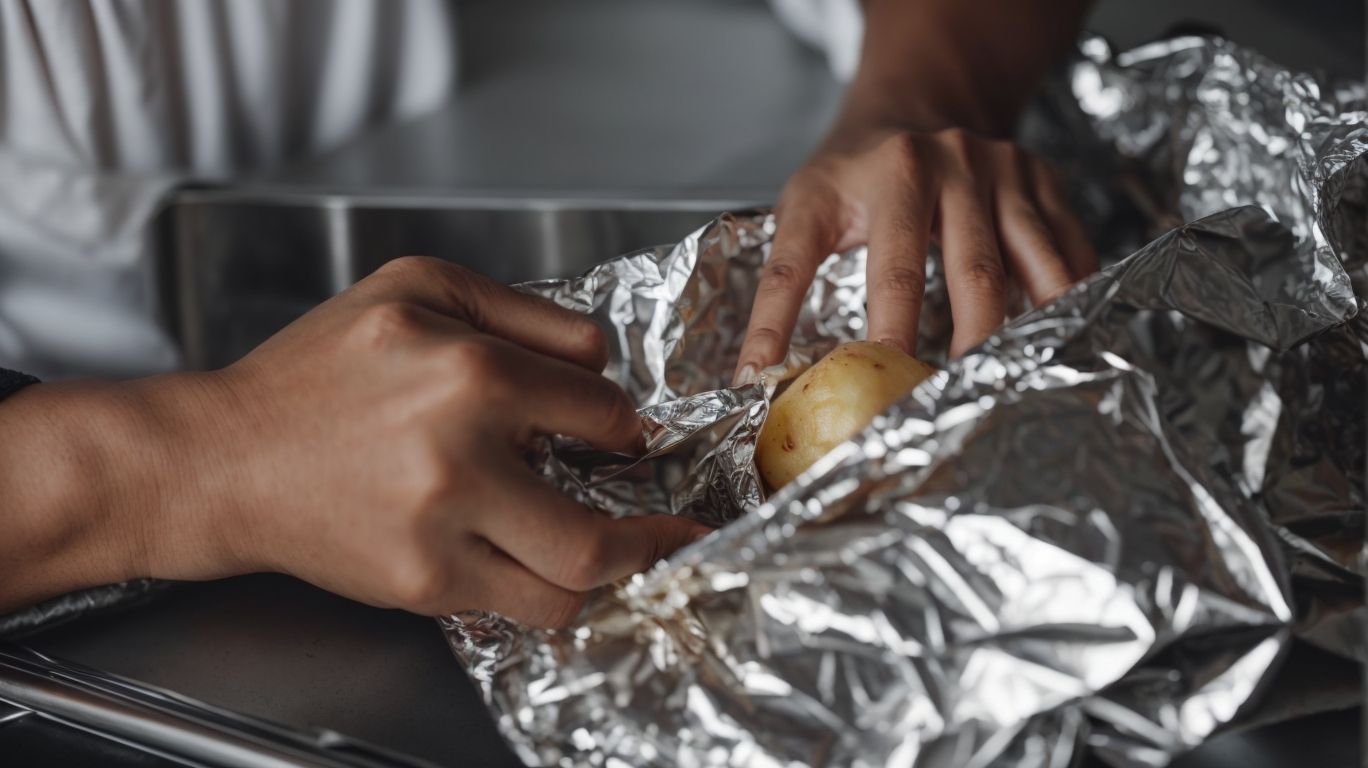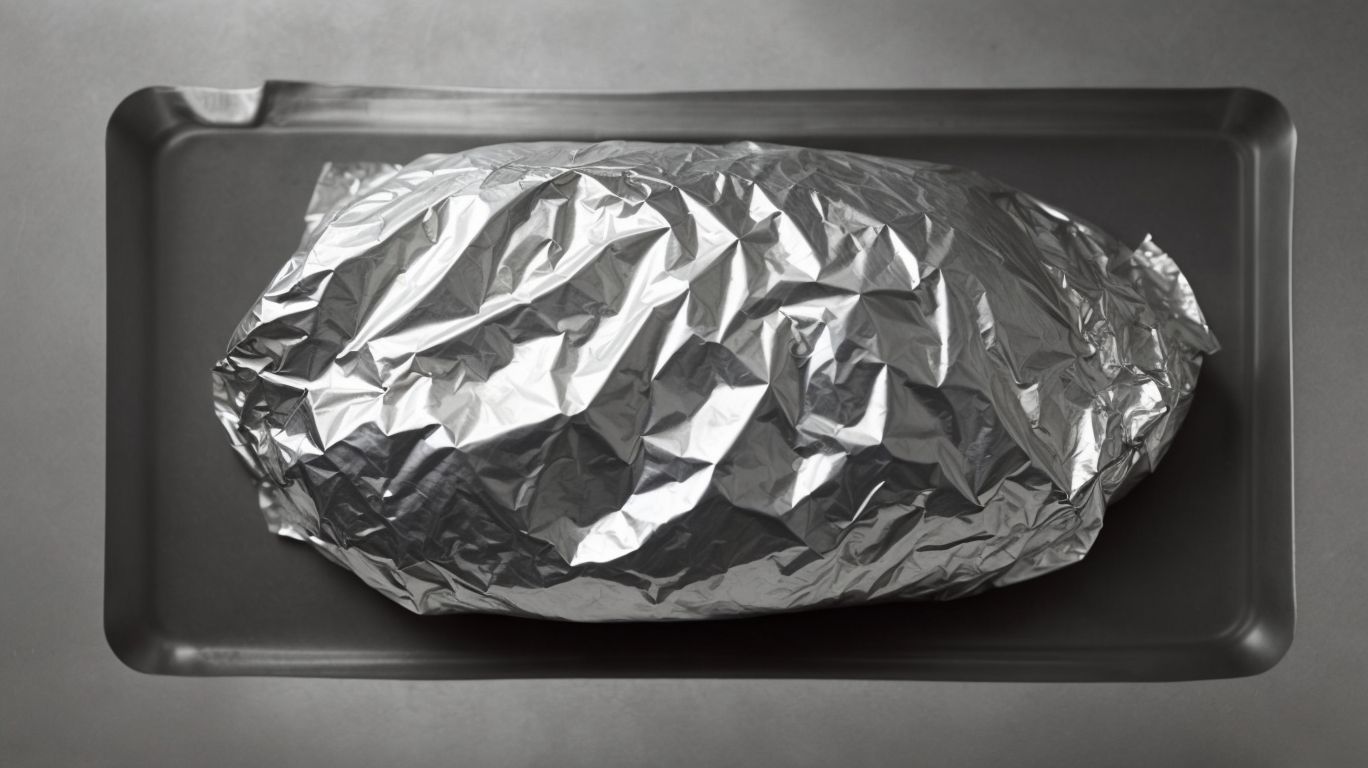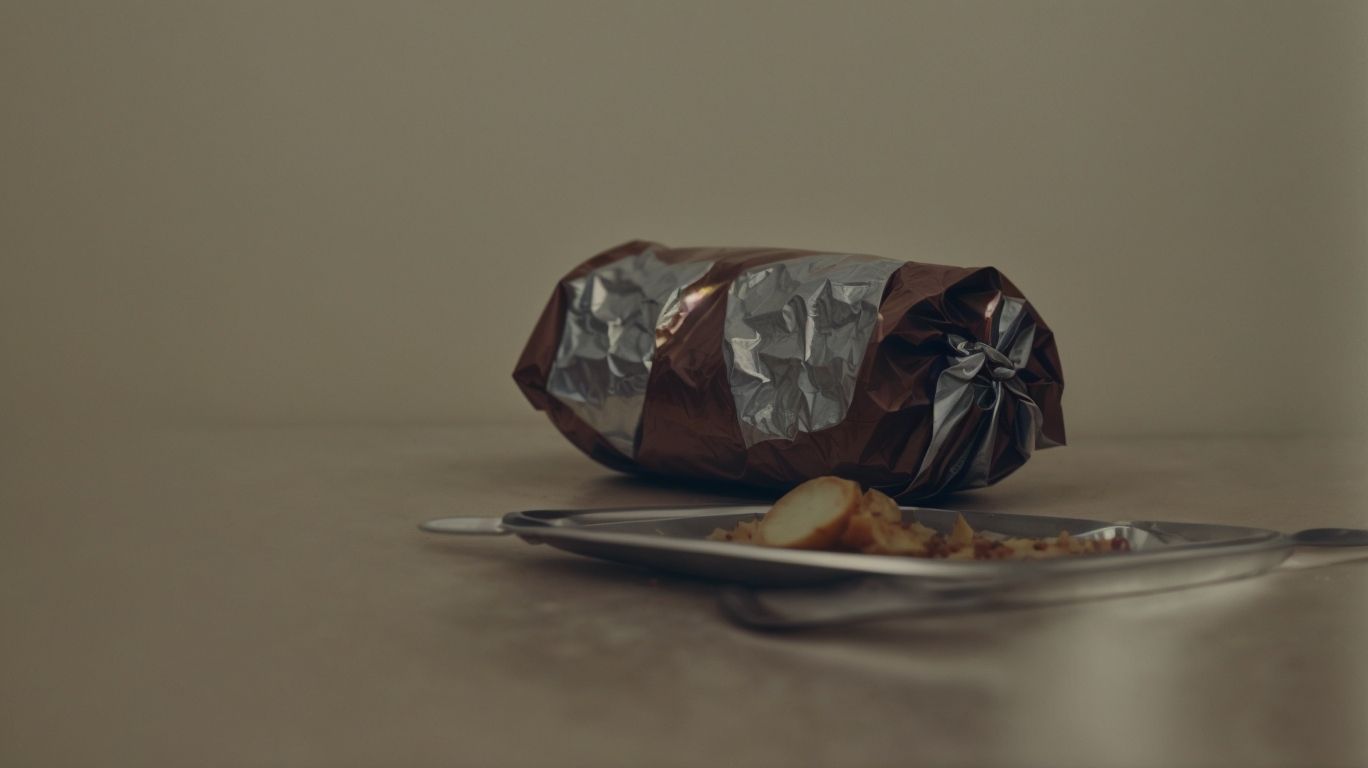How to Bake a Potato With Foil?
Are you looking to elevate your potato game? Look no further!
In this article, we will dive into the world of baked potatoes with foil. From choosing the right potatoes to adding delicious toppings, and finally, baking them to perfection, we’ve got you covered.
Whether you’re a seasoned chef or a beginner in the kitchen, this guide will help you create the perfect baked potato every time. So, let’s get started and turn those spuds into a culinary masterpiece!
Key Takeaways:
What is a Baked Potato?
A baked potato is a simple yet versatile dish made by baking a potato until its skin is crispy and its insides turn fluffy.
This classic comfort food can be prepared in various ways. One common method is to rub the washed potato skin with olive oil and sprinkle it with salt before baking in the oven. The contrast between the crunchy exterior and light, mealy interior is what makes a well-cooked baked potato so appealing.
Another popular variation is the baked sweet potato, which offers a naturally sweeter flavor profile and a softer texture compared to its white potato counterpart. Whether topped with sour cream and chives or filled with chili and cheese, baked potatoes are a beloved staple in many households.
Why Bake Potatoes with Foil?
Baking potatoes with foil helps in retaining moisture, ensuring fluffy insides and a crispier outside when compared to baking without foil.
When the potatoes are wrapped in foil before baking, the foil acts as a barrier that locks in the potato’s natural moisture. This prevents the potatoes from drying out during the baking process, resulting in a softer and more tender texture on the inside. The foil helps in conducting heat evenly around the potato, resulting in a consistent cooking process. The exterior of the potato also benefits from the foil, as it creates a conducive environment for developing a deliciously crispy skin.
Preparing the Potatoes
When preparing potatoes for baking, the choice of the right potatoes, washing and drying them thoroughly, and piercing them are crucial steps.
Choosing the Right Potatoes
Selecting the right type of potato, such as russet, sweet, or Idaho, can impact the final texture and flavor of the baked dish.
For instance, russet potatoes are well-known for their high starch content, making them ideal for fluffy baked potatoes with a light, dry texture. On the other hand, sweet potatoes offer a deliciously sweet and moist result, perfect for a unique twist on traditional baked potatoes. Idaho potatoes, often referred to as baking potatoes, have a versatile nature that can lead to a creamy and tender interior, creating a rich and satisfying baked dish.
Washing and Drying the Potatoes
Before baking, it is essential to thoroughly wash and clean the potatoes to remove any dirt or impurities that might affect the dish’s flavor.
Start by rinsing the potatoes under cool running water to remove any visible dirt on the skin. Scrubbing the potatoes with a vegetable brush helps to clean off any stubborn dirt or residue.
Peeling the potatoes is optional, but if you prefer to keep the skin on, make sure to pay extra attention to cleaning crevices and indentations where dirt can hide.
Once the potatoes are clean, pat them dry with a clean towel or paper towel before proceeding with the recipe. Removing all dirt ensures a tasty and hygienic dish.
Piercing the Potatoes
Piercing the potatoes with a fork or knife allows steam to escape during baking, preventing them from bursting and ensuring even cooking.
This simple step is crucial as it not only prevents messy eruptions in the oven but also helps in achieving that perfect fluffy texture inside. The holes created by piercing the potatoes act as vents, allowing the steam to gradually release, rather than building up inside and causing the potato to explode.
To achieve this, gently puncture the potato’s skin with a fork or a knife, ensuring the holes go deep enough to penetrate the flesh. Be mindful not to pierce too vigorously, as you don’t want to break the potato apart.
Wrapping the Potatoes in Foil

Credits: Poormet.Com – Jonathan Allen
Wrapping the prepared potatoes in aluminum foil helps seal in moisture and heat, resulting in tender and flavorful baked potatoes.
How to Properly Wrap Potatoes in Foil
When wrapping potatoes in foil, ensure that they are tightly sealed to create a cooking pouch that traps steam and heat.
-
Begin by placing the clean and dry potato on a piece of heavy-duty aluminum foil.
-
Wrap the potato in the foil by bringing the sides together and folding them over to create a sealed edge.
-
Make sure to pinch and fold the foil tightly to prevent any gaps that could let steam escape.
-
Creating a tight seal is crucial as it allows the potato to cook evenly and retain its natural moisture, resulting in a fluffy and delicious outcome.
Adding Seasonings and Toppings
Enhance the flavor of baked potatoes by adding seasonings such as kosher salt, black pepper, and various toppings like chives, sour cream, BBQ sauce, or salsa.
These flavorful additions not only provide a burst of taste but also add a delightful texture to the creamy potato base. For a hint of freshness and mild onion flavor, sprinkle some finely chopped chives generously over the top. A dollop of rich sour cream adds a creamy and tangy element that complements the starchy goodness of the potato.
For those craving a smoky, tangy kick, drizzling some BBQ sauce over the baked potato creates a mouthwatering contrast of flavors. Alternatively, adding a generous dollop of zesty salsa provides a refreshing and spicy twist to each savory bite. The versatility of these ingredients allows you to tailor your baked potatoes to suit your mood and preferences, transforming a simple dish into a delicious culinary experience.
Baking the Potatoes

Credits: Poormet.Com – Russell Lee
The key to perfectly baked potatoes lies in preheating the oven, placing the prepared potatoes on a rack, and baking them at high heat for the right amount of time.
Preheating the Oven
Before baking the potatoes, it is essential to preheat the oven to the recommended temperature to ensure even cooking and a crisp outer skin.
Preheating the oven before baking is a crucial step in achieving perfectly cooked potatoes. By preheating the oven, you allow the heat to distribute evenly throughout the entire oven space, creating a consistent cooking environment. This ensures that all sides of the potatoes receive the same level of heat, preventing uneven cooking. The initial blast of high heat helps seal in the moisture within the potatoes, leading to a fluffy interior, while the high temperature kickstarts the caramelization process, resulting in a delectably crunchy outer skin.
Placing the Potatoes in the Oven
After preparing the potatoes, place them on a rack in the preheated oven for even exposure to heat, resulting in uniformly baked potatoes.
Positioning the potatoes on a rack allows hot air to circulate around each spud, ensuring all sides are cooked to perfection. By elevating the potatoes, you prevent them from steaming on the sheet pan, which can lead to uneven doneness. This method promotes crispy exteriors and fluffy interiors, the ultimate dream texture of baked potatoes. Properly placing the potatoes is crucial to achieving consistent results each time you bake them.
How Long to Bake Potatoes with Foil?
The baking duration for potatoes wrapped in foil varies based on the size and type of potatoes, typically ranging from 45 minutes to 1 hour.
For small or medium-sized potatoes, you can aim for the lower end of the baking time range, around 45-50 minutes at a moderate oven temperature. Larger potatoes, like russets, may require closer to the full hour to ensure they are cooked through evenly. It’s essential to preheat your oven adequately before placing the foil-wrapped potatoes inside, ensuring even cooking throughout. If you prefer a crispier skin, consider unwrapping the foil and returning the potatoes to the oven for an additional 10-15 minutes. Always assess the doneness by testing with a fork for a tender interior.
Serving and Enjoying Baked Potatoes
To enjoy baked potatoes, ensure they are cooked to perfection, remove them from the oven, and add final toppings such as sour cream, cheddar cheese, BBQ sauce, or salsa.
How to Tell When Potatoes are Done
Potatoes are done baking when a fork can easily pierce through the skin and into the soft insides, indicating a perfect fluffy texture.
Another way to check for doneness is by gently squeezing the potato to feel for a slight give, ensuring it’s not too firm. The ideal temperature inside a fully cooked baked potato should be around 210°F or 98°C, providing that heavenly, warm sensation when you take a bite. Achieving the right balance of crispy skin and tender interior requires patience, but the results are worth it for a delightful culinary experience.
Removing the Potatoes from the Oven
When the potatoes are fully baked, carefully remove them from the oven using oven mitts or a heat-resistant kitchen tool to prevent burns or accidents.
It’s crucial to ensure that the oven mitts or heat-resistant tool completely cover your hands and arms, providing a protective barrier against the intense heat of the oven.
Once you have a secure grip on the hot potatoes, gently slide them out of the oven, being mindful of any potential obstacles or slippery surfaces that could cause a hazardous situation.
Remember to place the hot potatoes on a heatproof surface, such as a trivet or heat-resistant mat, to avoid damaging countertops or causing accidental burns.
Adding Final Toppings and Serving Suggestions
For a delightful eating experience, top the baked potatoes with a variety of options such as chives, sour cream, cheddar cheese, BBQ sauce, or salsa, catering to diverse preferences.
You can up the flavor profile by including toppings like crispy bacon bits, diced avocado, tangy jalapenos, sliced green onions, or a dollop of guacamole.
For those looking to add a touch of elegance, consider sprinkling some smoked salmon, a drizzle of truffle oil, a sprinkle of caviar, or a sprinkle of fresh dill.
For a hearty and comforting option, try loading your baked potatoes with slow-cooked chili, creamy spinach and artichoke dip, buttery lobster meat, or savory pulled pork.
Frequently Asked Questions
Can I bake a potato with foil?
Yes, baking a potato with foil is a great way to cook a potato with a crispy skin and a fluffy interior.
How do I prepare the potato for baking with foil?
Start by scrubbing the potato clean and then pat it dry. Next, prick the potato with a fork a few times to allow steam to escape during baking.
What type of foil should I use?
You can use any type of foil, but it’s recommended to use heavy-duty or extra heavy-duty foil to prevent the potato from burning.
How long does it take to bake a potato with foil?
It typically takes about 50-60 minutes to bake a potato with foil. The exact time may vary depending on the size of the potato and your oven’s temperature.
Can I add toppings while baking the potato with foil?
Yes, you can add various toppings such as butter, cheese, or herbs before wrapping the potato in foil. This will infuse the potato with additional flavors while baking.
Can I bake multiple potatoes at once with foil?
Absolutely! Just make sure to leave enough space between each potato on the baking sheet and adjust the cooking time accordingly. You may need to add a few extra minutes for multiple potatoes.

